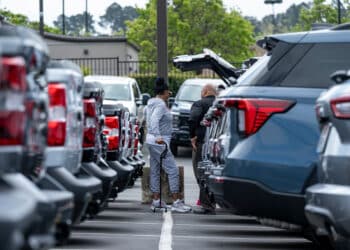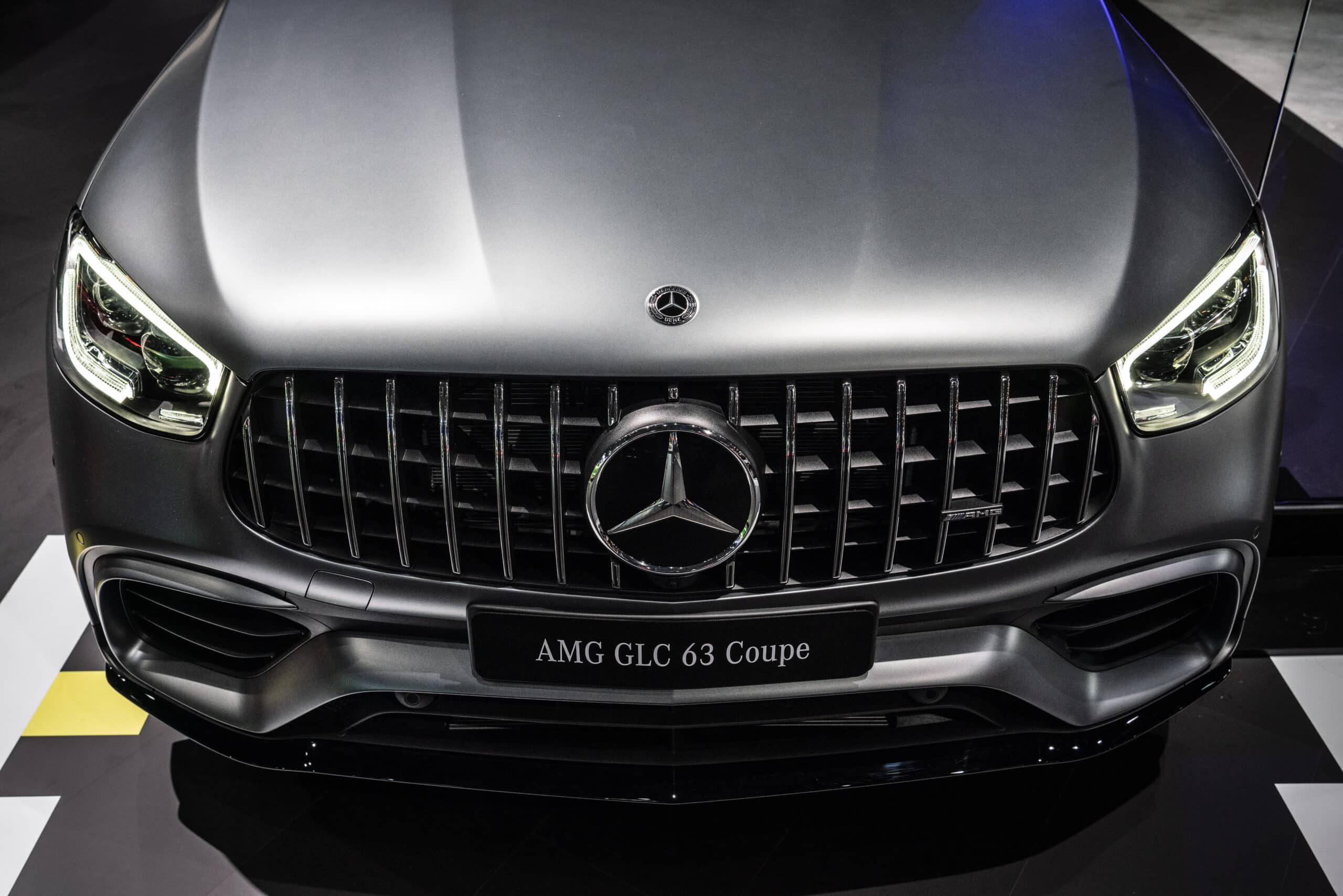Podcast: Used EV sales outpace new as Trump bill ends tax credits
Listen to ‘Weekly Wrap’ as AFN editors break down top stories from past week
President Donald Trump’s One Big Beautiful Bill marks the end of the federal EV tax credits at a time when sales of used EVs and hybrids are ramping up and new EV sales are slowing.
The bill, signed July 4, could spur additional incentives at the state level and from manufacturers as the federal credits end nearly seven years early. The bill moves the expiration date up to Sept. 30 versus the initial end date of Dec. 31, 2032.
At the same time, lower prices and more models coming off-lease contributed to an uptick in used-EV sales in May, while new EV sales declined year over year.
Hybrid sales have also been on the rise, with gas-hybrid sales making up a record 12.6% of total vehicle sales in April.
In powersports, several Harley-Davidson dealerships have closed their doors amid a dip in motorcycle sales and in tandem with leadership changes at the company.
Weaker motorcycle sales mirror trends in the wider powersports market headed into the summer months, with powerboat retail sales down 9% YoY through April and North American RV registrations down 5.6% YoY in May.
On the tech front, Santander Consumer USA has launched a new pre-qualification dealer lead generation tool, and CarMax is gearing up to launch updated versions of its chatbot tools for associates and customers.
In this episode of the “Weekly Wrap,” Auto Finance News Editor Amanda Harris, Senior Associate Editor Truth Headlam and Associate Editor Aidan Bush discuss the latest updates on electric vehicles, incentives, powersports and technology for the week ended July 11.
Subscribe to “The Roadmap Podcast” on iTunes or Spotify or download the episode.
Register here for “Digital strategies for exceptional customer experience,” a free Auto Finance News webinar set for Tuesday, July 15, at 11 a.m. ET.
Editor’s note: This transcript has been generated by software and is being presented as is. Some transcription errors may remain.
Hello everyone and welcome to the Road Map from Auto Finance News since 1996, the nation’s leading news on an automotive lending and leasing. It is Monday, July 14th and I’m Amanda Harris. The one big beautiful bill passed July 4th and could spur additional incentives at the state level and for manufacturers as the federal credits. End nearly seven years early for EVs. The bill moves the expiration date for the credits up to September 30th, with the initial end date of December 31st, 2032. To fill the gap, we could see a similar trend to when requirements for the tax credits changed, which spurred several automakers to offer incentive. Of $7,500 to fill that gap. Several states have also already had their own clean vehicle rebates in place, and we could see many more pop up as a result of ending these federal tax credits. The bill separately also allows consumers to deduct their vehicle loan interest from their taxes if the car is made in the US. The tax deduction is for tax years through 2028. There are several stipulations outlined in the bill as well. Also under the bill, the Consumer Financial Protection Bureau’s funding was halved to about 6.5% of the Federal Reserve’s annual earnings, and that’s from a previous 12%. Less funding falls in line with the administration’s efforts to curb the CFPB’s influence in consumer finance and follows the Bureau’s withdrawal of more than 60 guidance documents in May, moves that are expected to result in more oversight at the state level and differences between laws and interpretations. This comes as complaints to the CFPB rose 38% year over year through June 30th. Going back to EV tax credits, while the bill does remove the federal EV tax credits early, we’re already seeing an uptick in used EV and hybrid sales that are rising through June. And I’ll turn it over to Truth to dive into these trends a little bit further. Truth, go ahead. Truth Headlam 2:16 Thanks, Amanda. The EV market is showing mixed signs of sustainability, with new EV sales facing hurdles and used EV sales flourishing. One reason for this is the rising prices for vehicles across the board. Average wholesale values for used EVs trend. Lower for other vehicles. Trended lower then for other vehicles, excuse me, rising only 0.7% month over month in the first half of June compared with non E Vs which rose 2% over the same period from sales. From the sales perspective, used EVs set a sales record of. More than 100,000 vehicles sold in the second quarter. And in the first half of the year, used EV sales surged 32.1%. Now new EVs, however, did not follow as much of A positive trend, and readers can look to the full article titled Used EVs Lead the Charge for more details. Despite the uptick in EV adoption driven by used EVs, the quickly approach and expiration of the federal tax credit will be a challenge to adoption. The one big beautiful bill, as you said, Amanda, moves up the expiration date by more than seven years. And while some believe that this new expiration date will pull sales forward in the short term, the drawback in demand from consumers in New Jersey is an example of how state and federal incentives can negatively impact sales and demand. The uncertainty in the EV market has also led to mixed sentiment from lenders. Which I unpack in detail in the article. But hybrids may be the silver lining in the electrified market. In fact, Fintech EV Life is launching hybrid financing at the end of the month. Co-founder and Co-chief executive Peter Glenn describes hybrids as having. A moment this year and he thinks that will continue to spread. Cox Auto also provided us with data which showed gas hybrids made-up 58% of electrified vehicle sales in April, which was up 11.6 percentage points year over year. Gas hybrids also made-up a record 12.6% of total vehicle sales in April. For the record, Cox Auto’s data is on about a two-month lag. Interested listeners, though, can find more on the 411 on hybrids in my article titled Consumers Hit the Gas on Hybrids. Now for an update on power sports, I’ll turn it over to Aidan. Aidan. Aidan Bush 5:04 Thank you so much, Truth. I think you’ll actually hear that a lot of that sort of new versus used dichotomy is going to continue in the power sports industry. So let’s start off with sort of the new here. Sales declines and closures have really defined sort of new vehicles in power sports. So there is a Colorado. Harley-Davidson dealership that announced it’s set to close its two locations by the end of July, which marks at least the 5th Harley-Davidson dealership to close or consolidate since March. Tasos Panas, a former general manager of network development for Hog, said that new motorcycle sales have made it harder for dealers to achieve adequate volume as they continue to decline. As a result, the dealer network has naturally downsized. Meanwhile, powerboat retail sales have dropped 9% from January to April 30th, year over year. Dealers like Brian Connor of Road River Road of Road River Boat Sales, excuse me, says the slowdown continues to come from sustained interest rates. Retail RV sales also hurt, with North American RV registrations dropping 5.6% year over year in May, according to BMO Capital Markets. This all sounds pretty doom and gloom, but there’s a similar trend of positive sales for used that Truth mentioned with EV. So we’re seeing with used Harley-Davidson dealerships, their sales are performing better, Tasos Panas told us. The same is true, Brian Connor said of Road Riverboat Sales that some of their brokering between sort of used inventory is actually going better. And we’re also hearing that non Harley-Davidson dealerships are staying resilient. So Mark Sheffield, who is the National Power Sports Dealer Auction Board advisor, previously predicted that up to 400 dealerships could close in 2025, but he said that largely hasn’t been the case so far. And he also pointed out that non Harley dealership profitability. Was actually above pre COVID levels. There is a bit of a caveat to that, just that basically power sports dealers have still been chewing through their pre tariff inventory. And so while we kind of wait to see how much tariffs cause price hikes for these power sports vehicles. Some of those closure predictions may be more accurate in the coming months. We just have to wait and see. That’s all for me on the Power Sports side, so I will turn things over to Amanda. Amanda Harris 7:26 Great. Thank you, Aiden and Truth. Lots and lots of news last week. Also last week in economic news, US consumer borrowing rose in May at the slowest pace in three months with total credit outstanding at $5.1 billion after a 16.9 billion gain in April. Trying to do some automotive news, Nissan Motor raised $4.5 billion from a junk bond sale as part of broader efforts to raise more than $6.8 billion as they look to turn around the business. And then in auto finance news, Santander Consumer USA launched a new prequalification and lead generation tool for which dealerships pay a. Monies. Trips and fee to host on their websites. Drive Together, as it’s called, plugs into vehicle listings and allows consumers to pre qualify for financing with Scusa without affecting their credit scores. They can also see cars within their budget and take their pre call information to dealerships. The tool is an expansion of Santander’s Drive’s marketplace that. Been around since late 2023. Also on the technology front, CarMax is testing new AI chat bot capabilities for both retail associates and customers and plans to launch an updated version of Sky, which is their customer facing AI virtual assistants in the next few months. A chat bot will be more accurate, conversational and empathetic. And that’s all for today. Thank you for joining us on the road map. Be sure to follow us on X and LinkedIn. Registration is also up open for upcoming Auto Finance Summit 2025 and Power Sports Finance Summit 2025, both coming up in the fall. And as always, we will see you online at autofinancenews.net and here next time.









